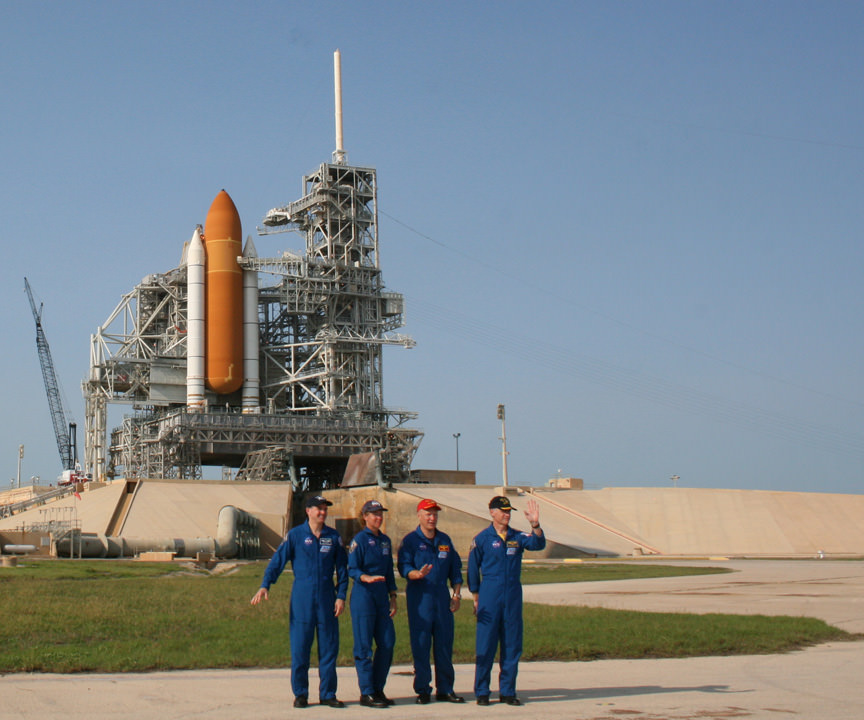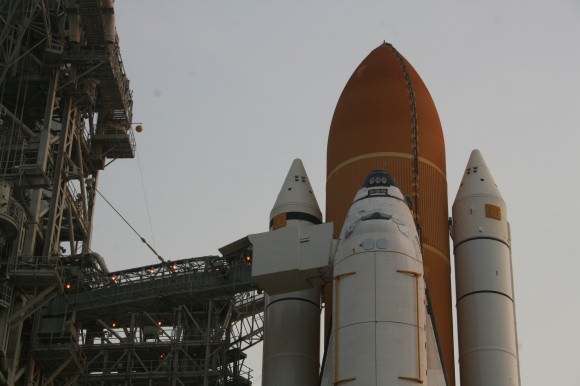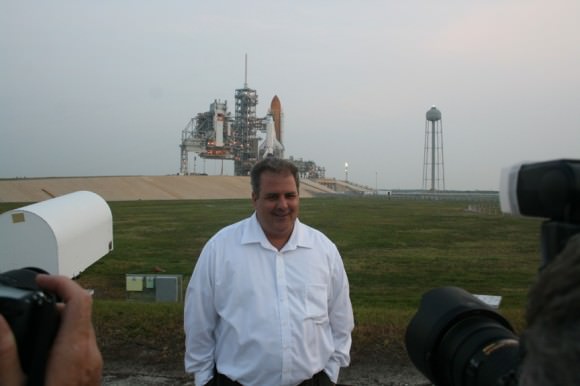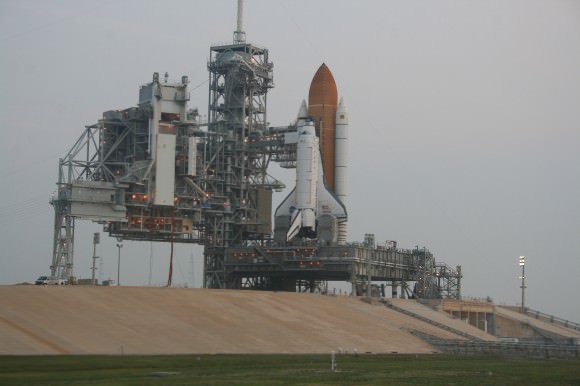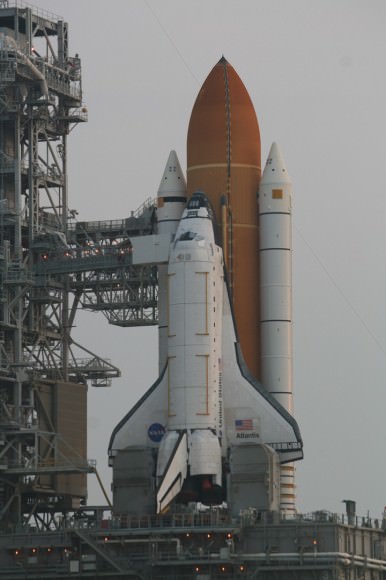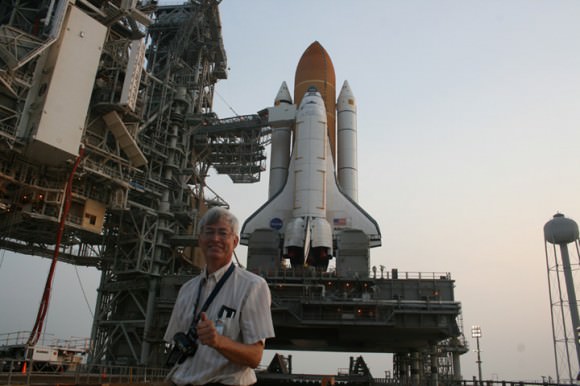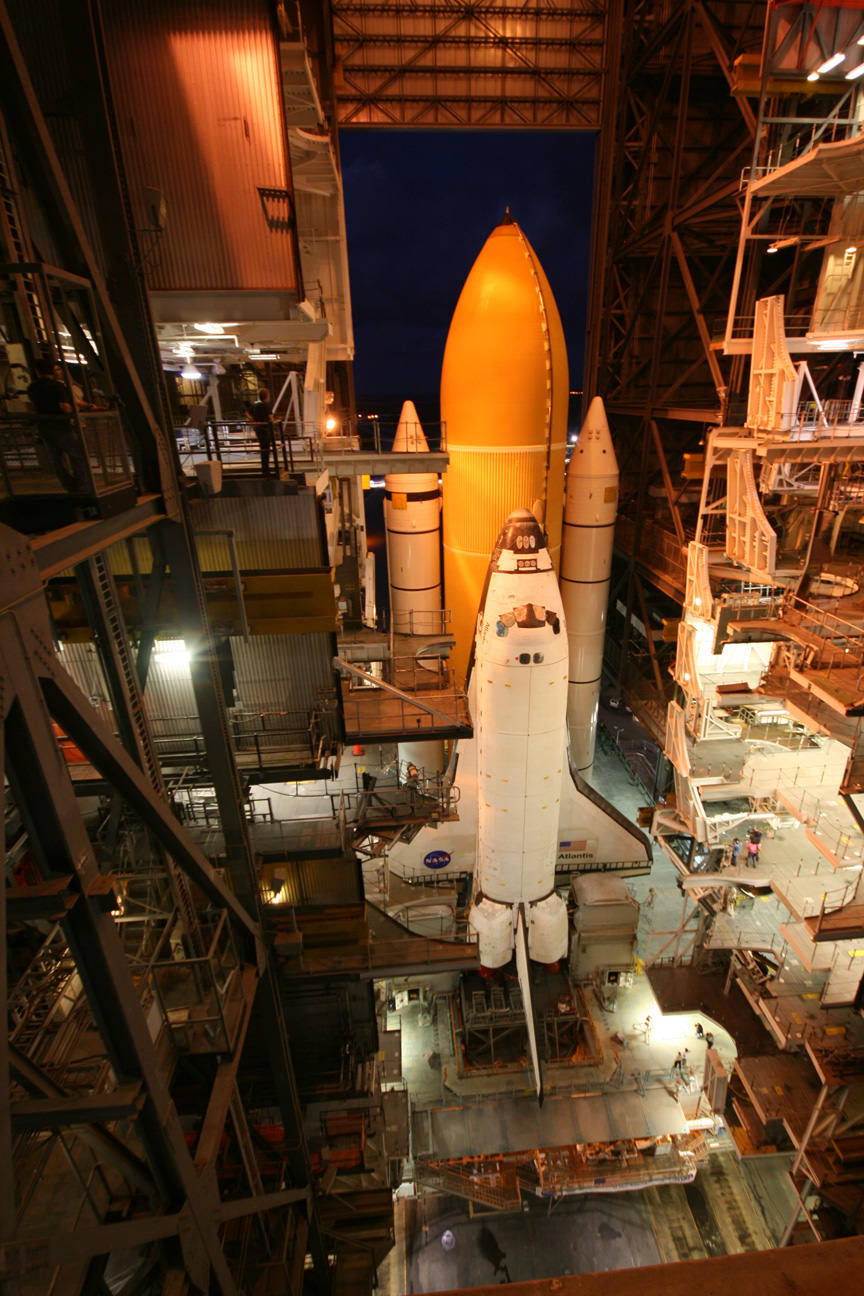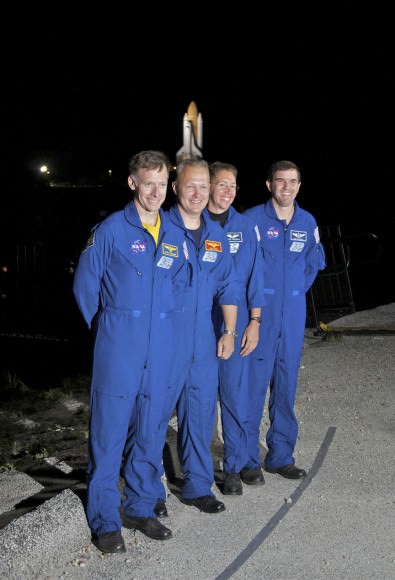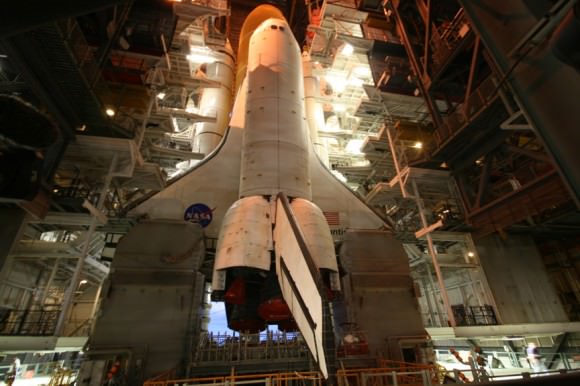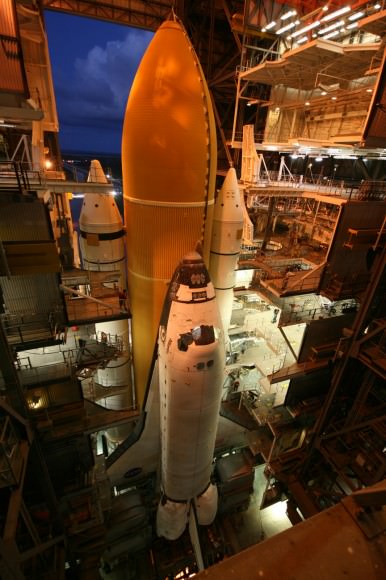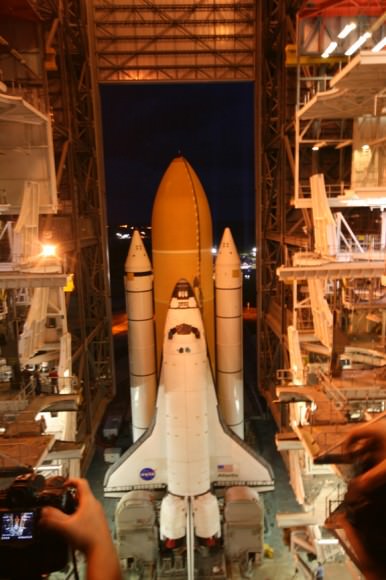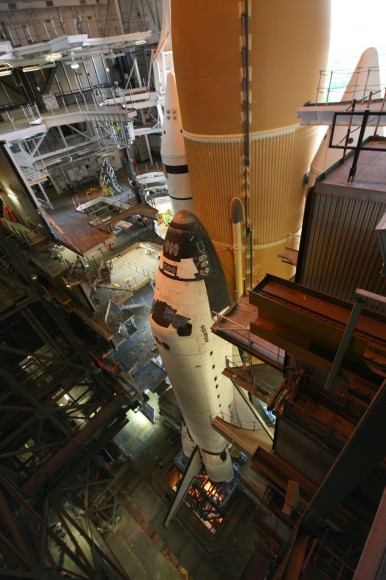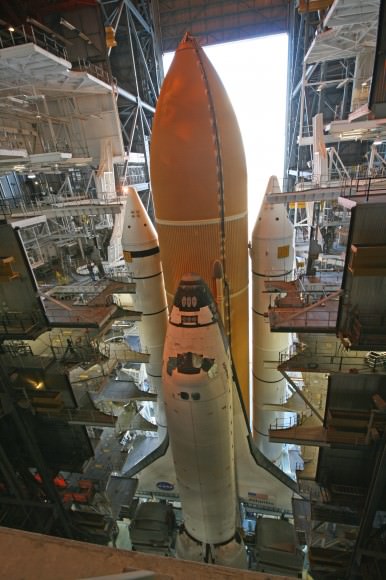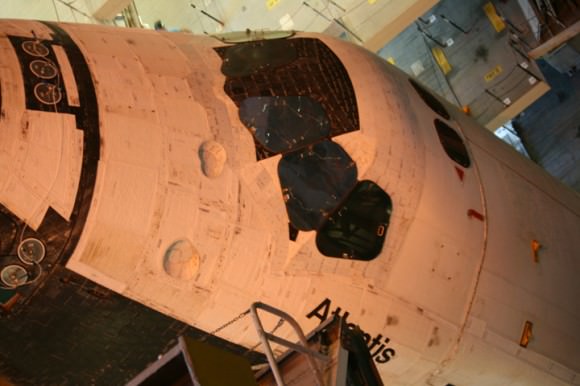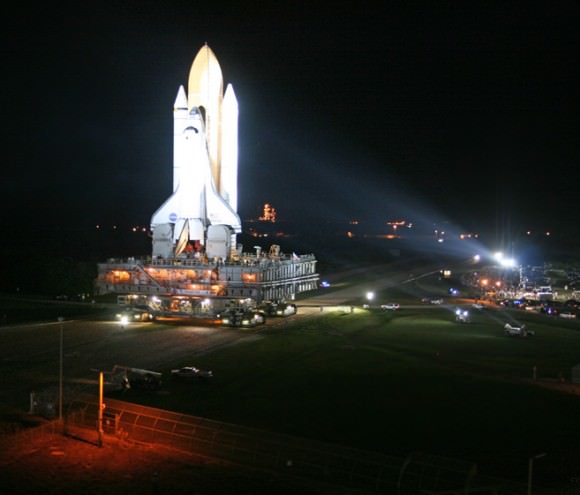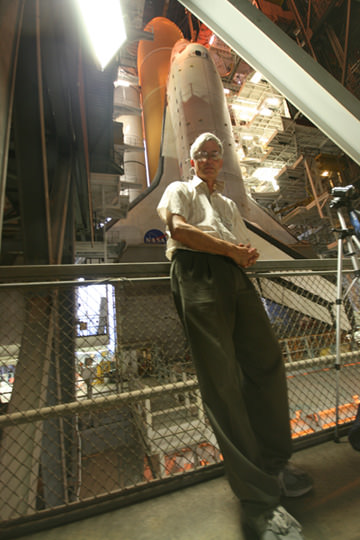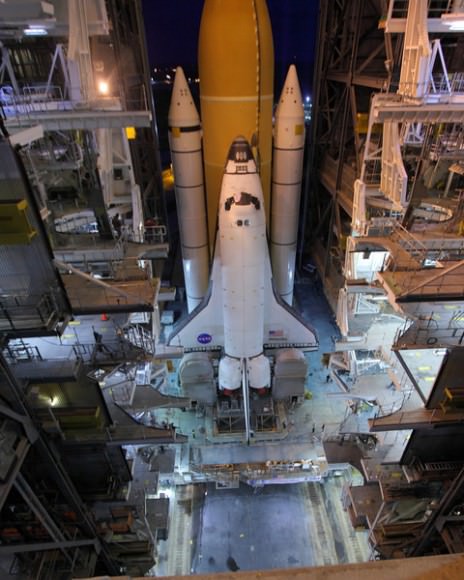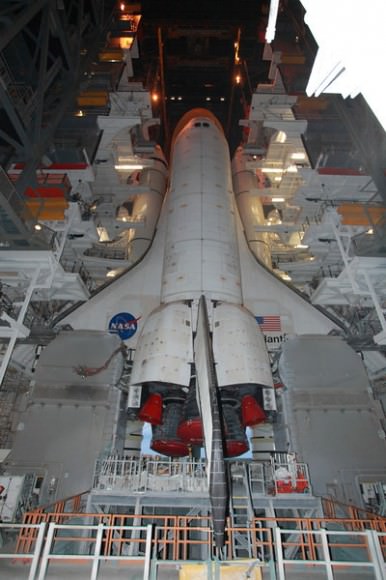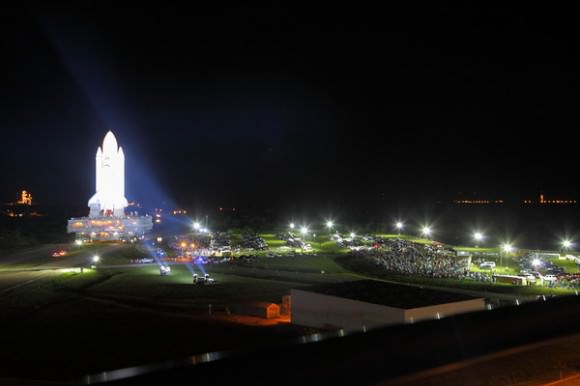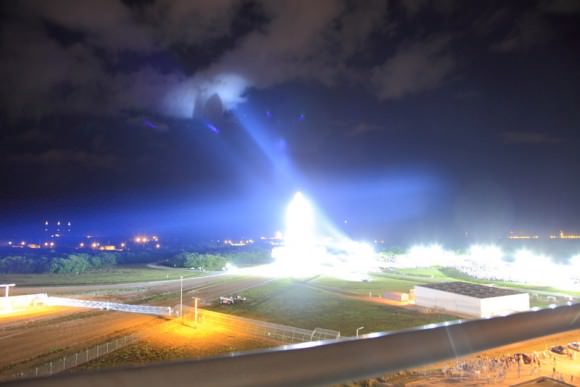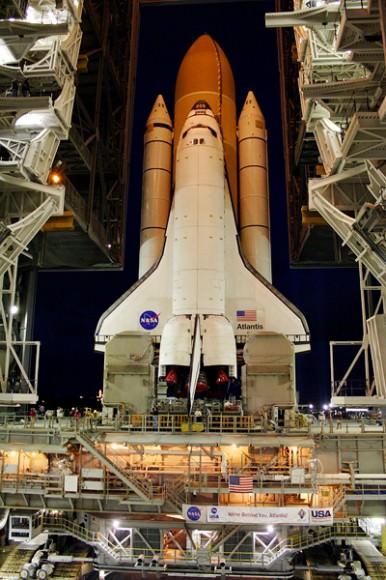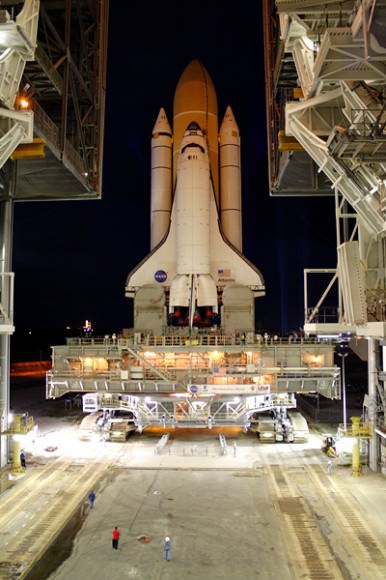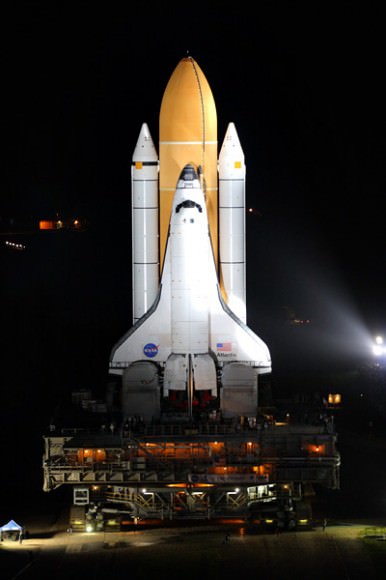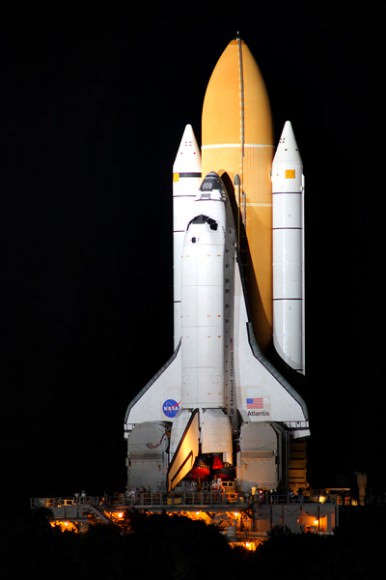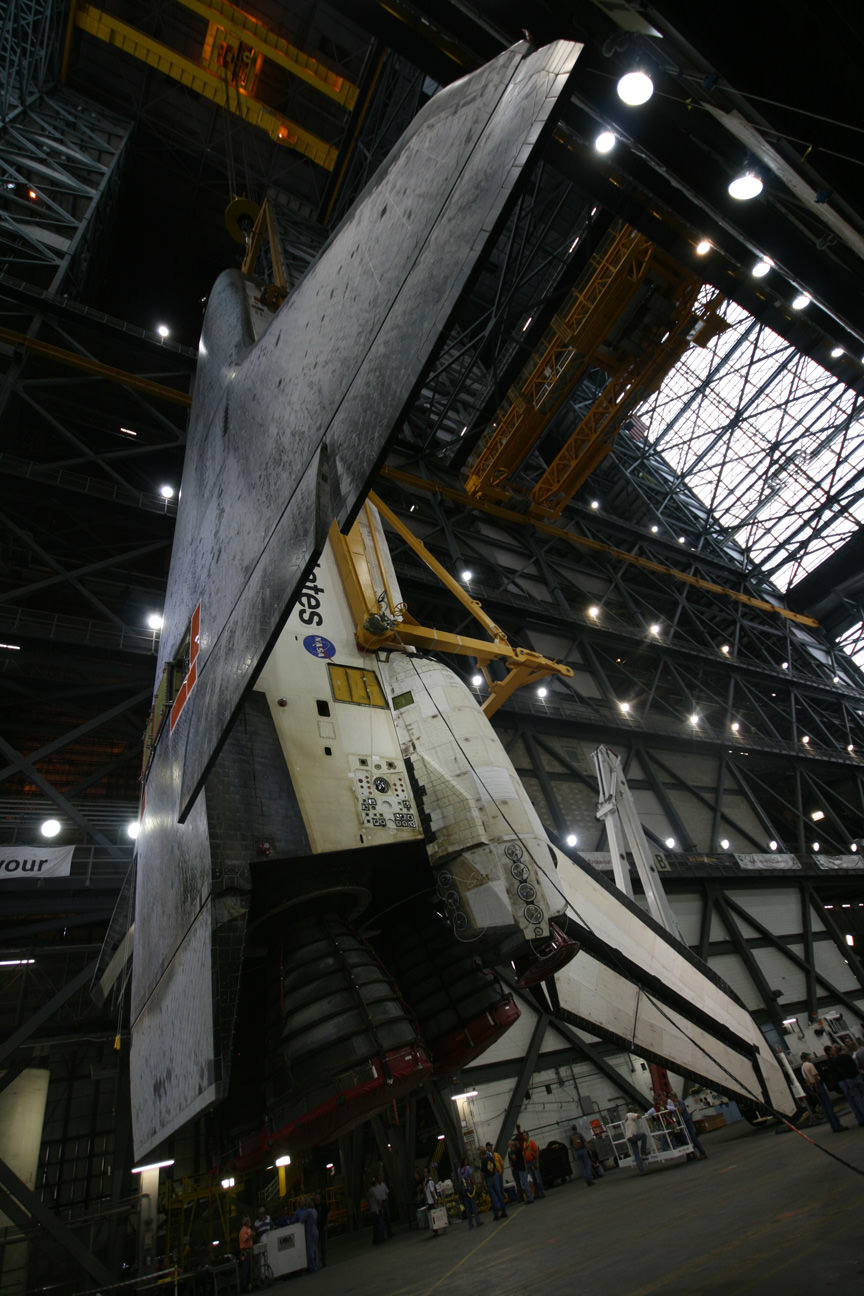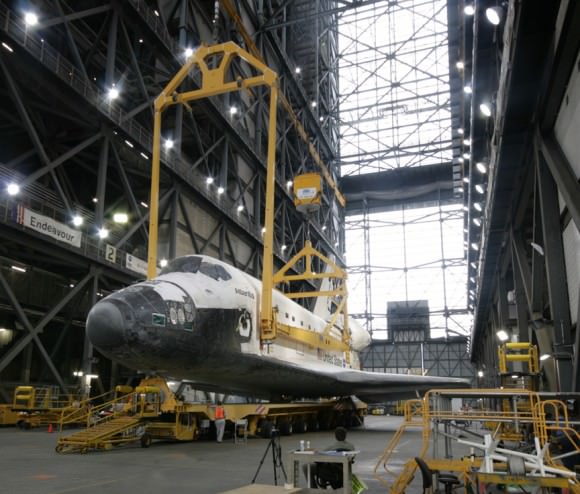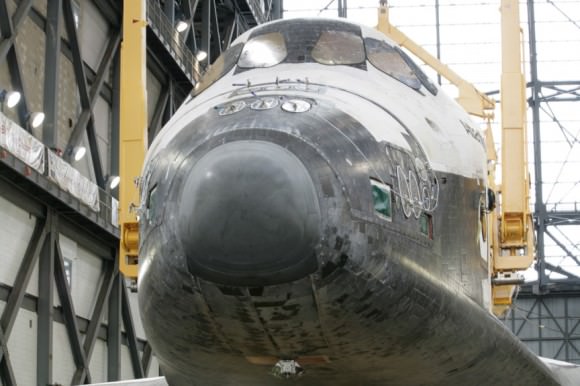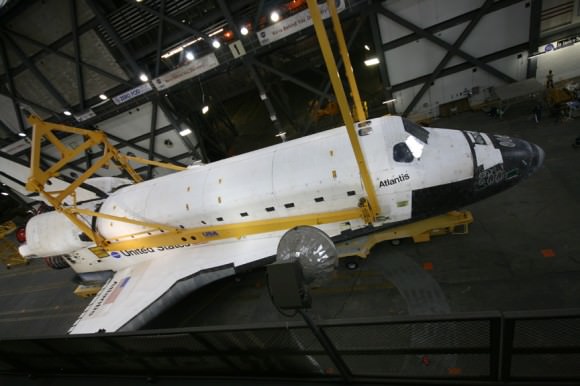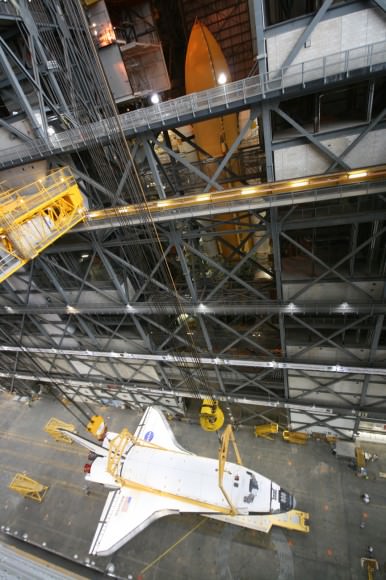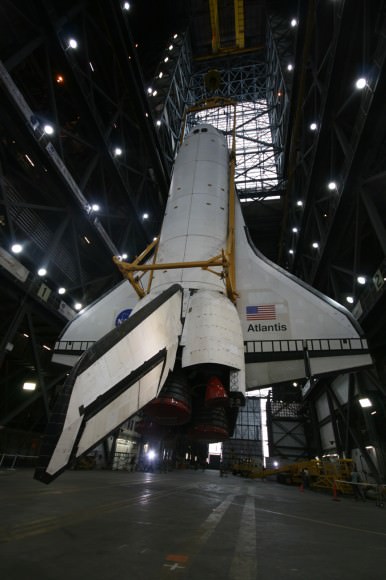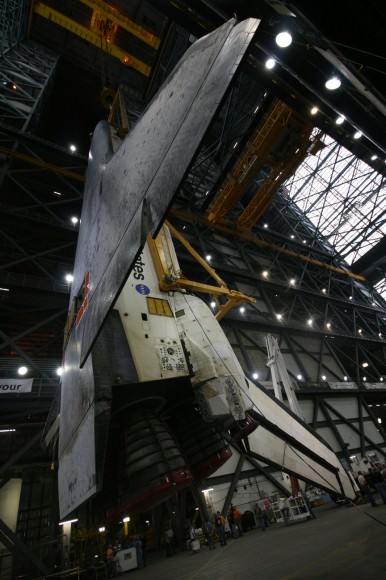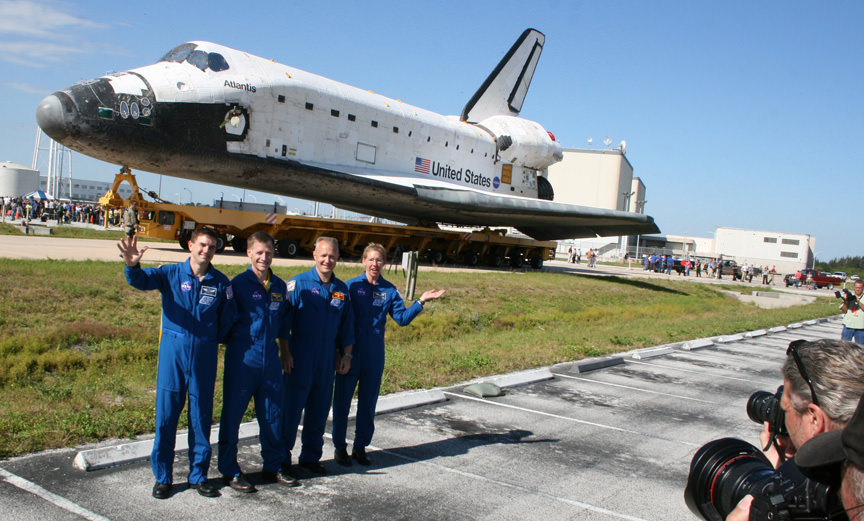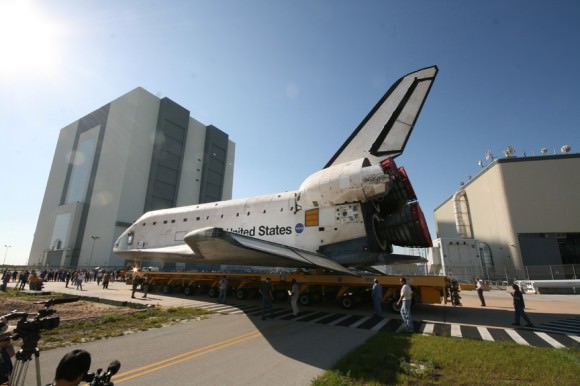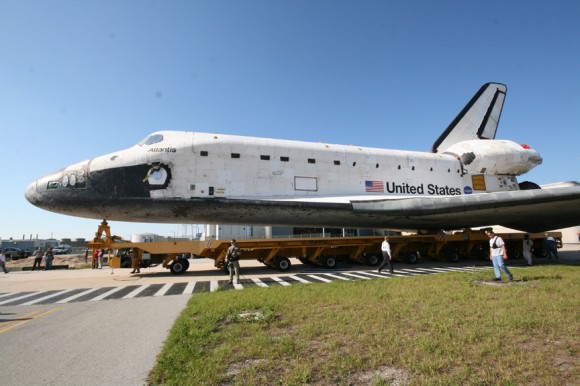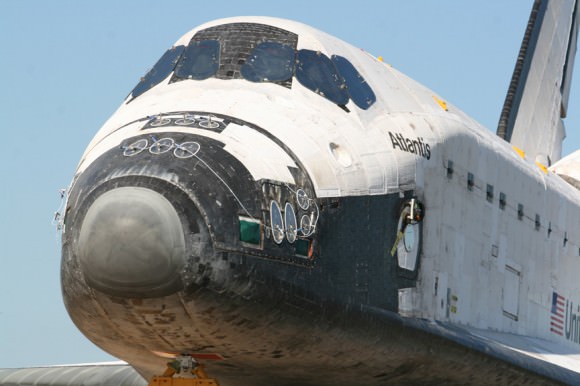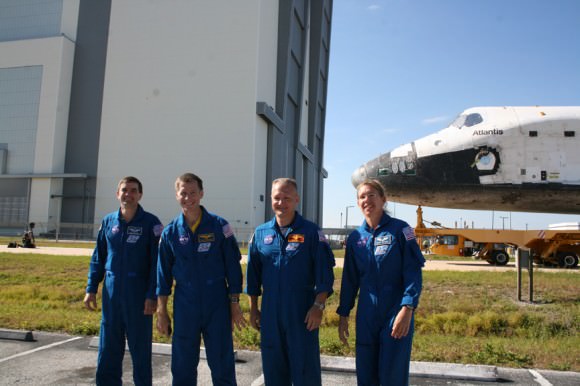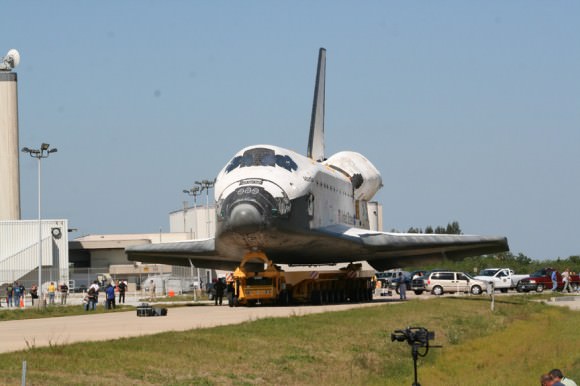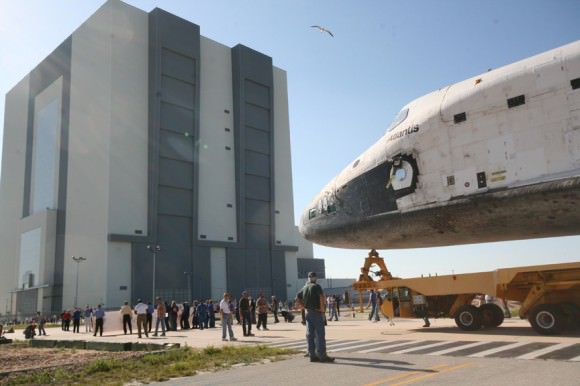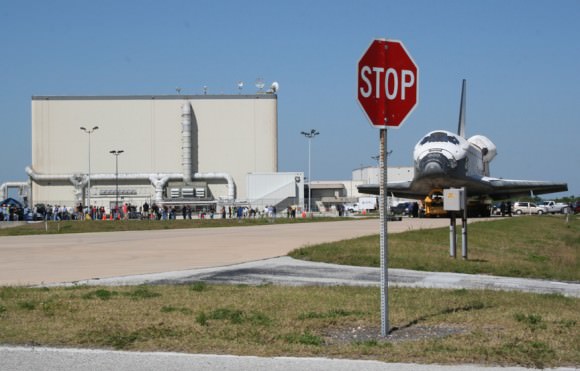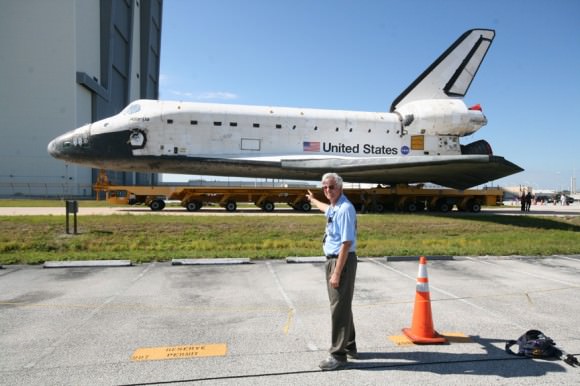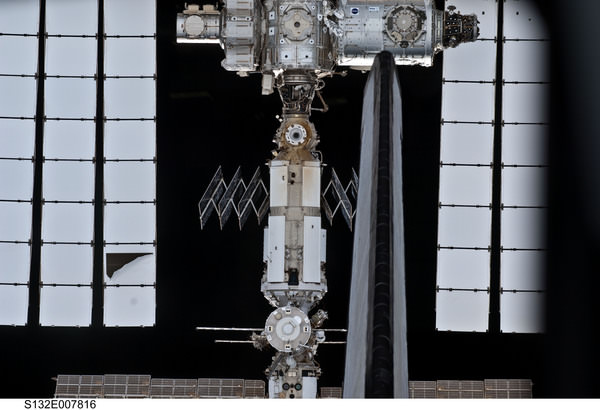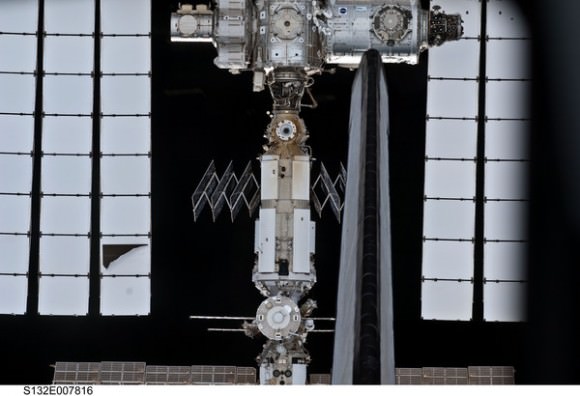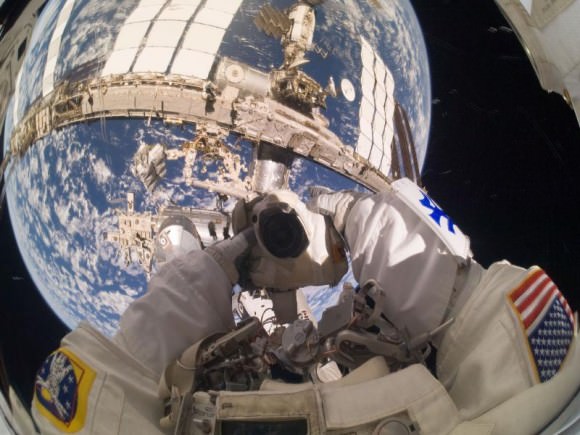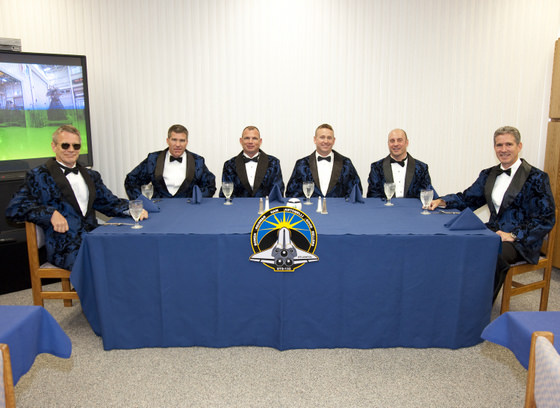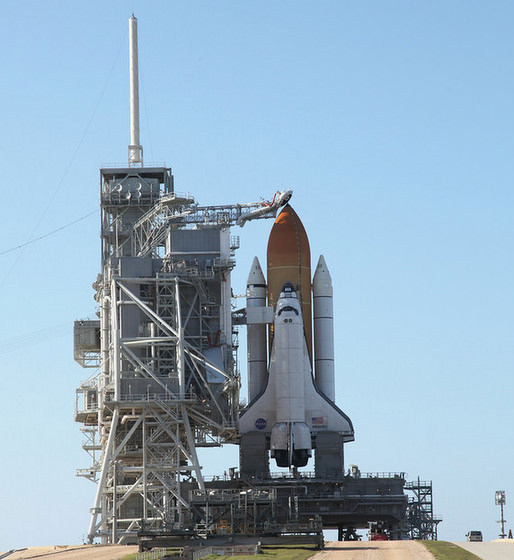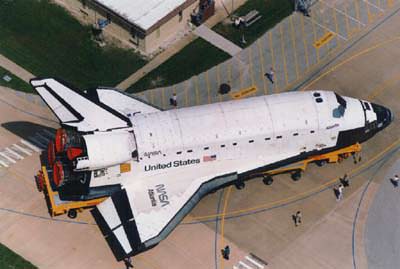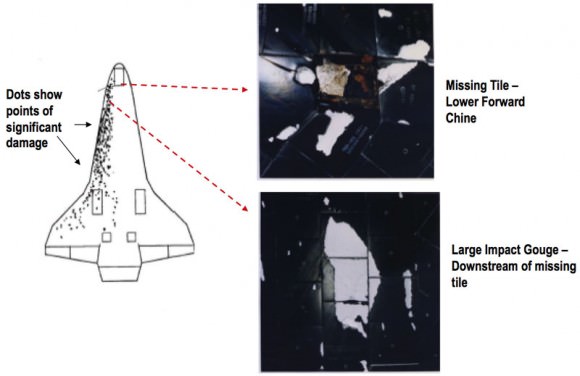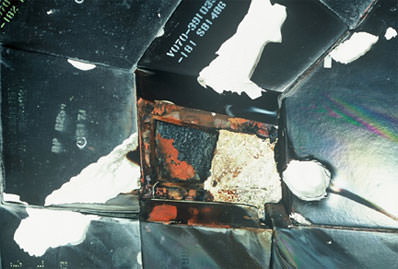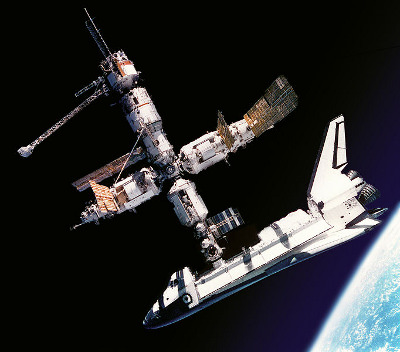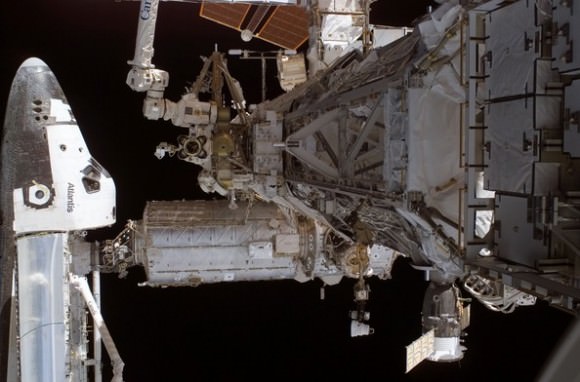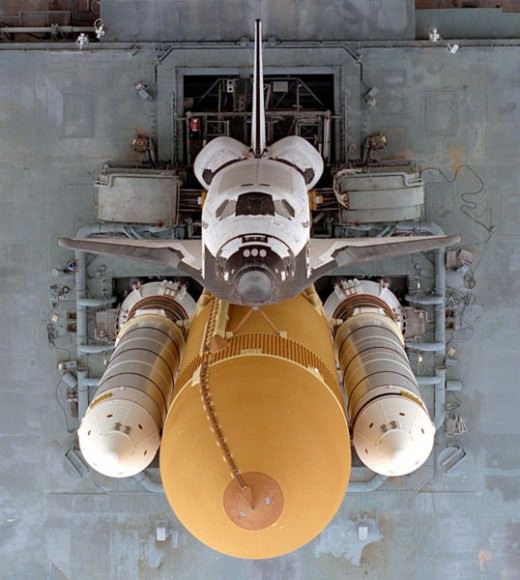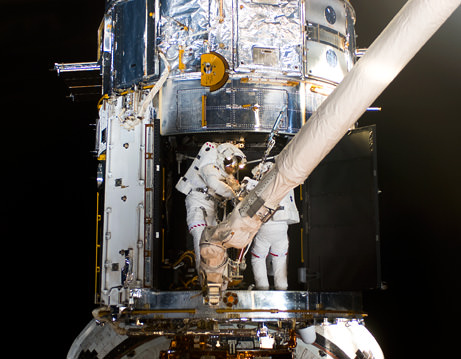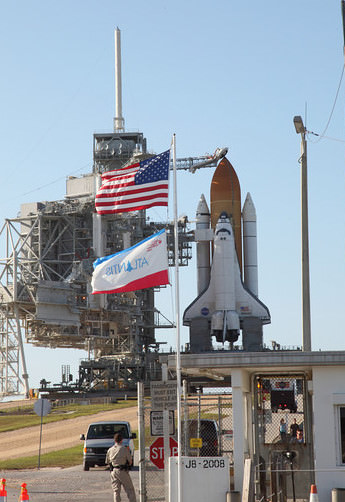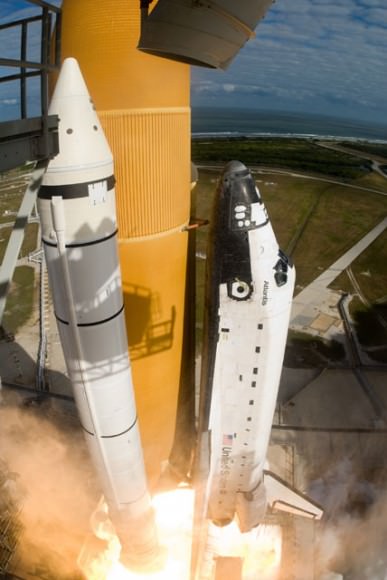[/caption]
KENNEDY SPACE CENTER – The “Final Four” shuttle astronauts who will ever voyage to Earth orbit aboard a NASA Space Shuttle Orbiter jetted into the Kennedy Space Center (KSC) this week for their final simulated countdown training at the seaside Florida Launch Pad.
The all veteran crew for the STS-135 mission arrived at Kennedy’s Shuttle Landing Facility (SLF) on twin T-38 jets for four days of comprehensive flight training for what’s known as the Terminal Countdown Demonstration Test (TCDT). Along with all other shuttle flight related activities, it’s the very last time this training will ever occur.
The TCDT is part of the ritual of training for all shuttle crews that takes place in the last few weeks preceding a liftoff and that concludes with a full countdown dress rehearsal from inside Atlantis at the launch pad.
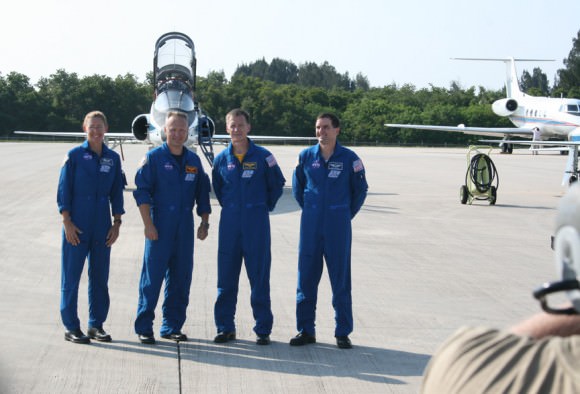
Chris Ferguson is leading the STS-135 mission and he will be recorded in history as the final Space Shuttle Commander. This will be Ferguson’s third shuttle flight and second one as Commander. Also aboard are Pilot Doug Hurley and Mission Specialists Sandy Magnus and Rex Walheim.
The quartet of space flyers are due to blast off aboard Space Shuttle Atlantis on July 8 at 11:26 a.m. EDT for the “Grand Finale” of NASA’s thirty year old Space Shuttle Program. If all goes according to plan the end of the Shuttle Era is less than 1 month away.
It’s a bittersweet moment for everyone working on the shuttle program. Proud to be part of a magnificent adventure with the most complicated machine ever built by humans, but simultaneously sad that the program is ending well before its true flight time is up and with no concrete timetable to replace the trio of majestic spaceships.
“We are incredibly proud to represent this, the final flight,” said STS-135 Commander Chris Ferguson after touchdown to dozens and dozens of journalists gathered at the shuttle landing strip to greet the astronauts.
“I speak on behalf of the crew, everyone in the astronaut office, and I’m sure everybody here at KSC in saying that we are just trying to savor the moment,” Ferguson added. “As our children and our children’s children ask us, we want to be able to say, ‘We remember when there was a space shuttle.”
The first order of business for Ferguson and Hurley was to practice shuttle landings in the Shuttle Training Aircraft (STA), which is a modified Gulfstream II jet.
During the TCDT period, the crew engaged in mission briefings at the Launch Control Center which is the brain of shuttle launch operations, payload familiarization and training at the Space Station Processing Facility, fire suppression training, range safety and security briefings and emergency escape training in an M113 armored personnel carrier near Launch Pad 39A. Read more in my upcoming features.
On the last day of TCDT, the astronauts donned their orange launch and entry suits, journeyed to the pad in the Astrovan and were strapped to their assigned seated inside the orbiter exactly as will occur on launch day for a full dress rehearsal of the launch countdown.
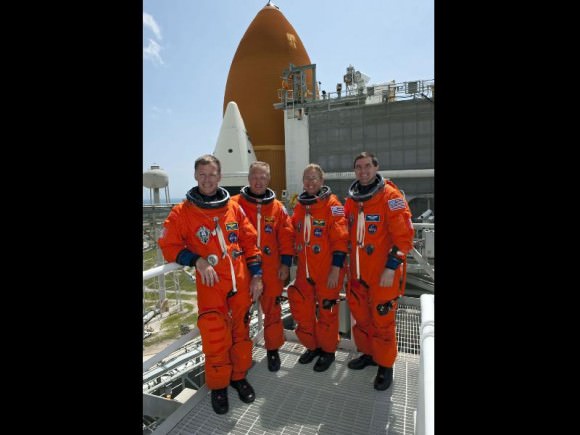
The crew also met with over 100 reporters for a Q & A session at the base of Launch Pad 39A which was back dropped by a thrilling view of Shuttle Atlantis atop the Mobile Launch Platform and the gigantic Flame Duct which directs the rocket exhaust way from the shuttle stack during launch.
“We’re very honored to be in this position,” Ferguson said to reporters at the foot of the pad. “There are many people who could be here. When the dice fell our names were facing up. We consider ourselves fortunate and lucky.”
“I think each of us feels a little extra burden to make sure we put on the best possible face forward for the last go around of this. The crew’s very prepared and we’re going to do a fantastic job.”
“I don’t think that the full magnitude of the moment will really hit us until the wheels have stopped on the runway,” said Ferguson, reflecting on the significance of the grand finale of all shuttle missions. “I’m not sure words will really be able to capture for the crew and for the entire shuttle workforce just how much the shuttle program has meant to us for the last 30 years.”
“TDCT is very comprehensive, hands on and invaluable training at the place you’re going to do it,” said Hurley. “Everything is a just a little bit different when you are in the real vehicle so this is a great way to get you ready for launch day – when it counts!”
Tucked inside Atlantis cargo bay is the Italian- built “Raffaello” logistics module, the primary payload. Raffaello is loaded full with some five tons of critical spare parts, crew supplies and science experiments that will be delivered to the International Space Station (ISS) during the 12 day flight.
The secondary payload is the Robotic Refueling Mission (RRM) which will demonstrate tools and techniques to refuel satellites in orbit.
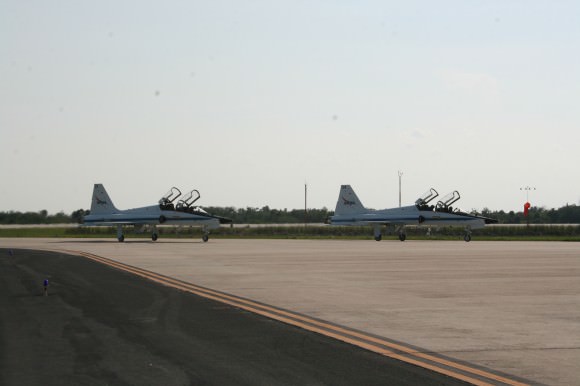
“Sandy Magnus is our ‘transfer czar’ in charge of emptying and filling Raffaello,” said Ferguson. Magnus is an ideal choice for the mission since she lived for months aboard the orbiting outpost and is familiar with its nook and crannies.
“We feel very honored to be on this flight and are very focused to perform it well,” said Magnus. “We are just the tip of the iceberg of a huge group of people who plan and get the hardware ready and prepare all our procedures.”
“I often think about how we will launch from the exact same launch pad that Apollo 11 launched at to go to the moon. It gives you goose bumps,” said Walheim.
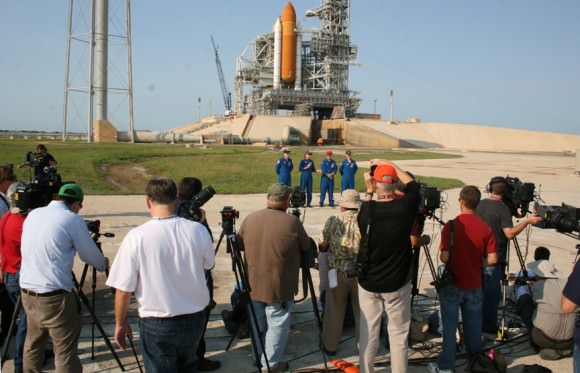
Watch the TDCT Launch Pad press conference here:
Read my prior features about the Final Shuttle mission, STS-135, here:
Final Payload for Final Shuttle Flight Delivered to the Launch Pad
Last Ever Shuttle Journeys out to the Launch Pad; Photo Gallery
Atlantis Goes Vertical for the Last Time
Atlantis Rolls to Vehicle Assembly Building with Final Space Shuttle Crew for July 8 Blastoff

